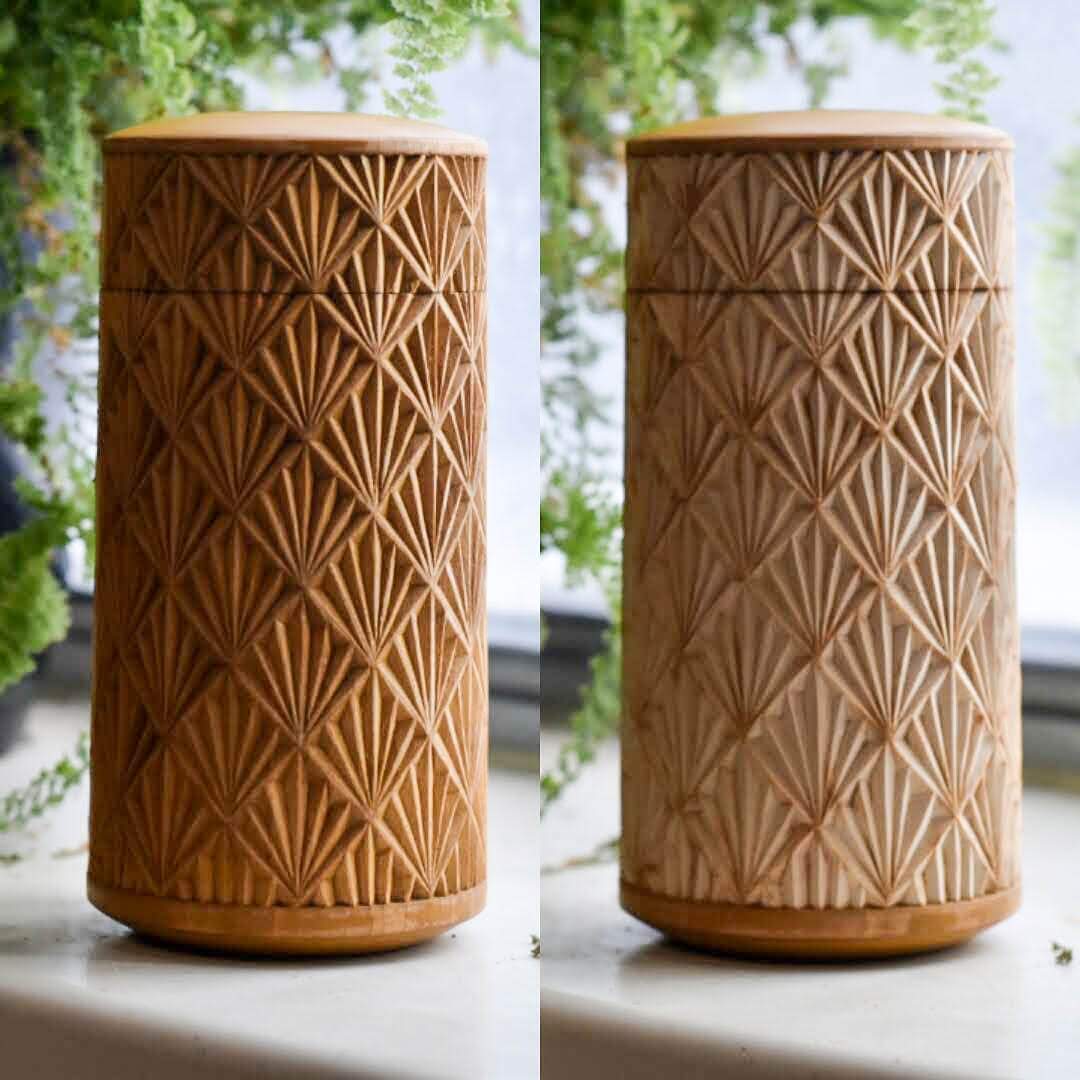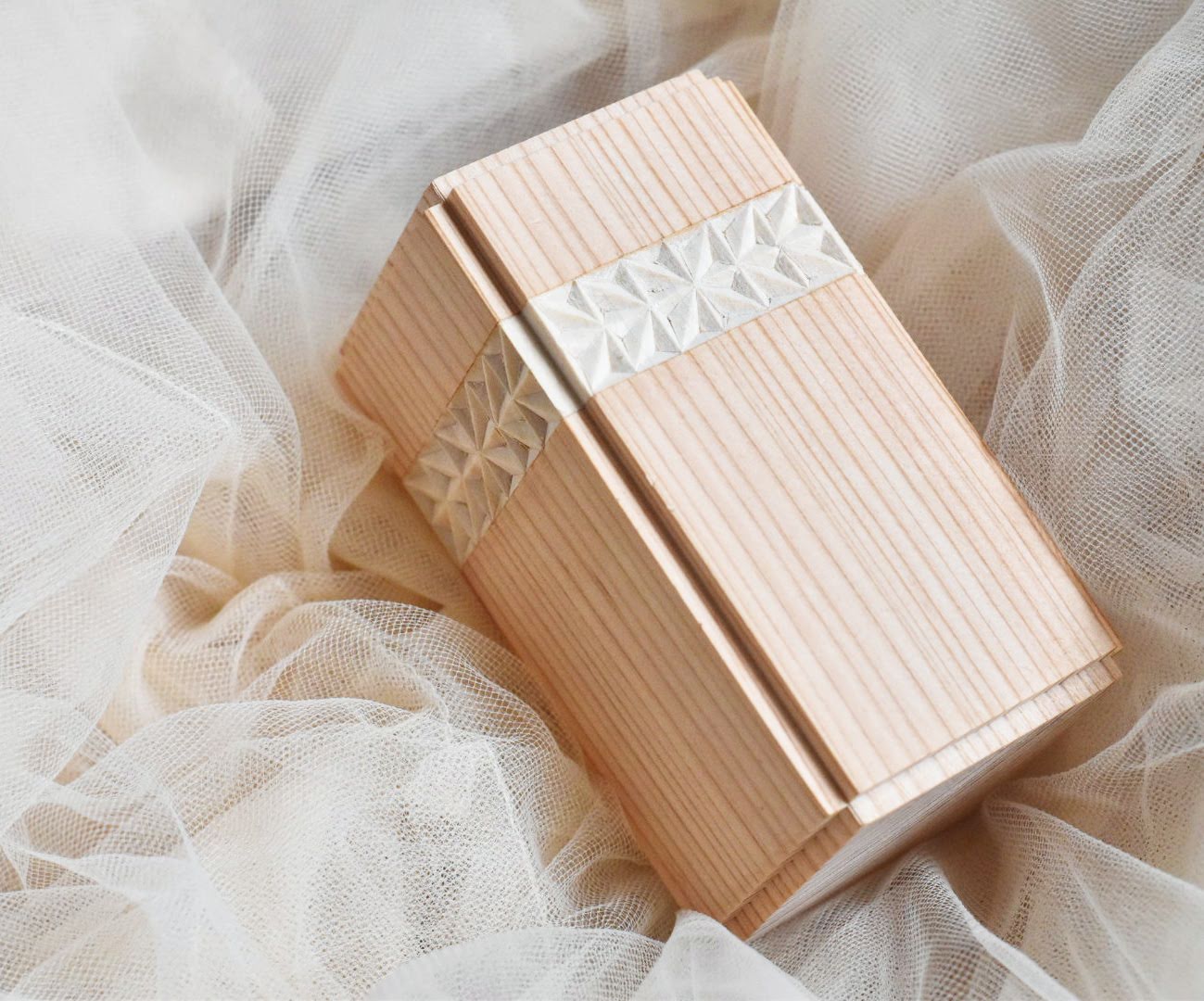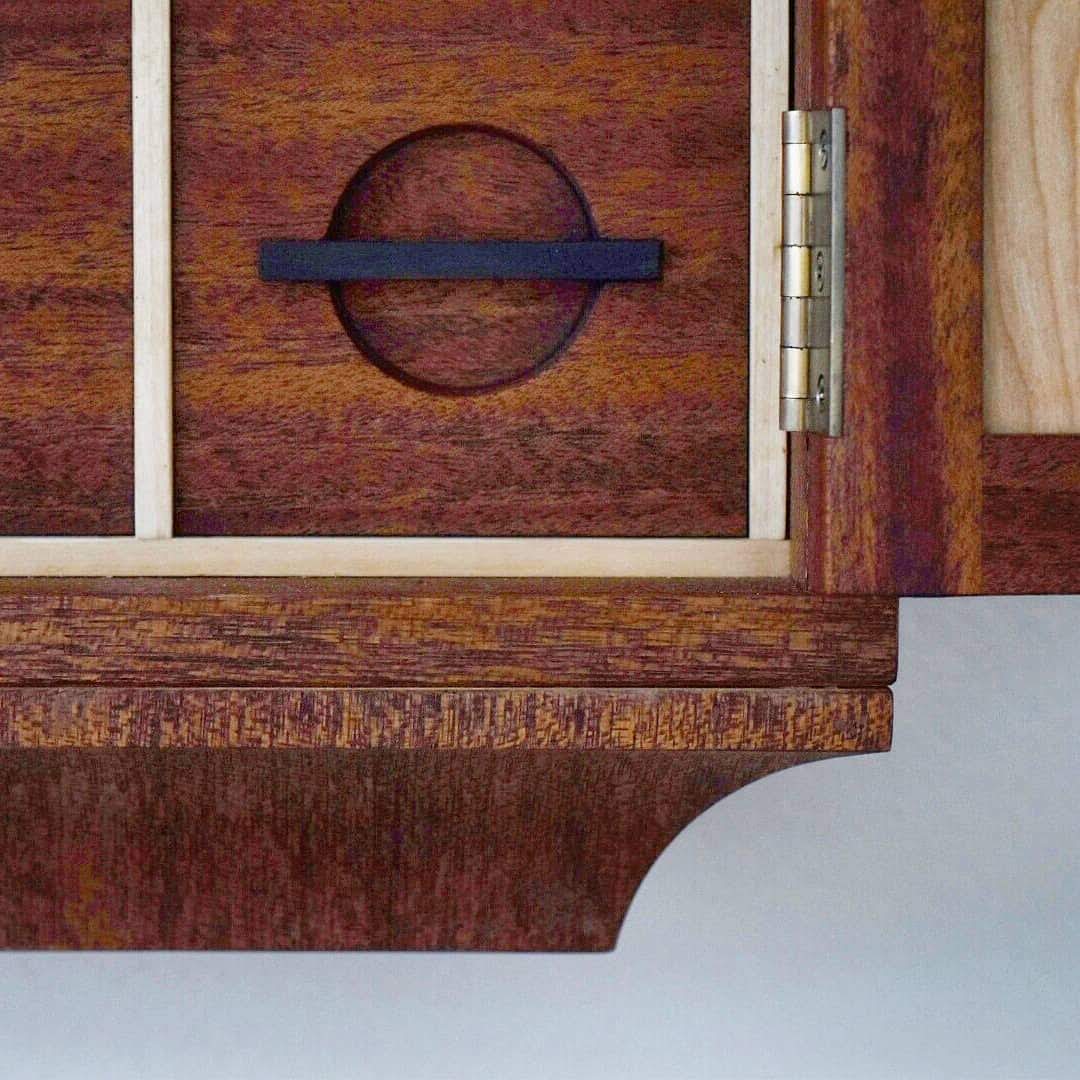Ancient Marigold Canister, Restored

"This piece was carved and painted, then “aged” with water and sandpaper before half of it was “restored” by carving the paint away. Many of the sculptures from ancient Greece were originally painted, but we usually think of them as white. So which side of my canister is closer to being “right”? Does restoring ancient artwork mean making it as close to the original as possible, or does it mean making the piece as clean and pristine as possible? How does projecting our own tastes onto an ancient work affect our ability to truly appreciate the culture it came from?”
I spent the last 3 days hating this piece. I thought about starting over a dozen times every day. I thought it was the ugliest thing I'd ever made. And I certainly didn't want it to stay in my house. How could the art show director open the shipping box to find this, without wrinkling her nose at it?
Then I heard a podcast about Greek sculpture, and the dilemma we face over prioritizing the way we're used to thinking about marble statues, versus the way we're learning they were originally intended. I started to think about this piece in a different way. Could I tell the same story as that podcast with this outcast piece of carving?
Nothing changed about the piece itself, but suddenly it kinda worked. What changed was the story I told myself about it. That was sufficient to totally transform the meaning and value of the piece. In fact, for me, the story is the most important part. The story is what makes it art.
The reason I'm telling you this is because I didn't know the story about the Greeks from the beginning. Art is not a passive process, where the Muse strike you with a brilliant, fully formed idea, and you execute it flawlessly because you are blessed with divine Talent. Art is made by wrestling: with a material, with a story, with yourself. "The Muses exist, but they have to find you working," as Picasso said. You don't have to know what you're doing. You just have to be willing to do it.




